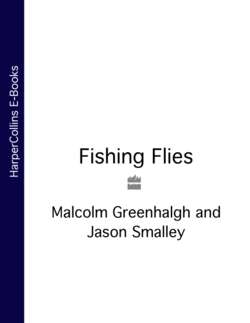Читать книгу Fishing Flies - Smalley - Страница 36
DUBBED BODY PATTERNS
ОглавлениеThere are two types of dubbing: light and not light. In the latter, the usual method of dubbing, the thread becomes lost in the dubbing. In light, sometimes called ‘touch’, dubbing only the merest wisp of fur is used so that, when the dubbed thread is wound along the hook shank, every turn of thread is still visible through the haze of dubbed fur. To help keep the fur in place, use a solid rather than a liquid wax.
WATERHEN BLOA
Thread: Yellow.
Body fur: Mole.
Hackle: Waterhen underwing covert.
Outstanding during a hatch of olives.
SNIPE BLOA
Thread: Straw.
Body fur: Mole.
Hackle: Snipe underwing covert.
Good during a hatch of paler upwinged flies.
The following two wet flies are useful during a hatch of caddisflies, when the pupae are at or close to the surface, of a summer evening.
WOODCOCK & HARE’S LUG
Thread: Orange.
Body fur: Hare’s ear.
Hackle: Woodcock upper wing covert.
HARE’S LUG AND PLOVER
Thread: Primrose.
Body fur: Hare’s ear.
Hackle: Golden plover upper wing covert.
DARK WATCHET
Thread: Orange and purple (see below).
Body fur: Mole.
Hackle: Jackdaw throat or coot upperwing covert (otherwise, any small black soft hackle)
Use orange tying thread, tie in a separate length of purple, so that the two are tied in together at the end of the hook shank. Dub one of the threads very lightly. Then twist the two threads together and wind up towards the eye to create a segmented body. Cut off the excess purple and use the orange thread to tie in the hackle and finish off the fly.
Highly recommended during a hatch of darker water-bred flies, or a fall of dark land-bred flies.
